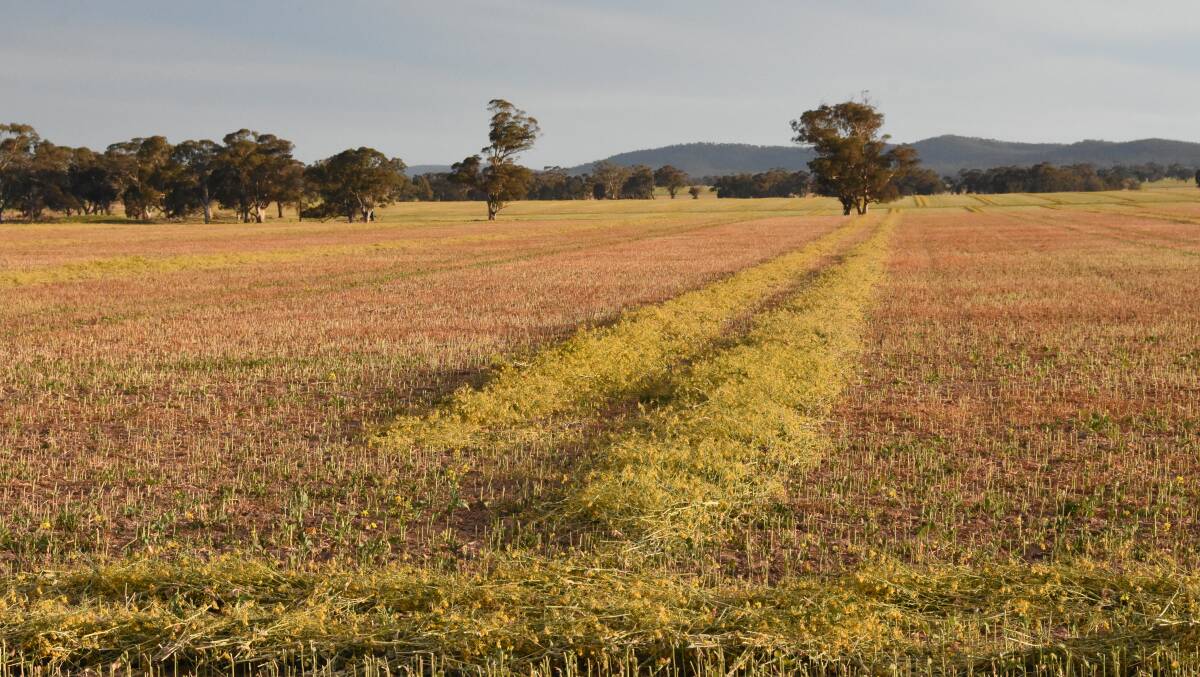
THE DRY spring and a marked year on year drop in production will see Australian canola production drop below 2 million tonnes for the first time since 2009-10.
The latest Australian Oilseeds Federation (AOF) crop report has total Australian production for 2019-20 at 1.9 million tonnes from 1.72m hectares planted, down 21 per cent from an estimate of 2.4 million tonnes in its July report.
Planted area is also down 13pc on the July report, reflecting paddocks, either cut for hay, grazed or abandoned due to the dry spring.
This means average yields of 1.1 tonnes a hectare, well below average, with low rainfall zone croppers generally expecting 1-1.8t/h, medium rainfall area looking for 1.8-2.4t/ha and high rainfall croppers hoping for yields in excess of 2.4t/ha.
Last year, even allowing for the east coast drought, there was 2.3m tonnes produced, primarily off the back of a big year in WA, which grew 1.45m tonnes.
This year, WA is predicted to produce just 792,000 tonnes, due to a dry and hot spring in many parts of the WA grain belt.
AOF executive officer Nick Goddard warned there was further downside risk even from this low number.
"Failing crops have continued to be cut for hay," he said.
Mr Goddard also said oil levels were likely to be down in some areas, such as WA, due to the hot weather during pod fill.

However, Riverina Oils trading manager and AOF treasurer Lachie Herbert said with headers starting to roll in the Riverina there were some farmers pleasantly surprised.
"We are getting reports of farmers finding the results are a bit better than they expected, in the odd case a lot better," Mr Herbert said.
"The really good crops are certainly the exception rather than the rule in the Riverina but there are a few farmers saying that there has been a bit more in the bin than they expected and that they were very pleased they decided to take the crop through to grain rather than cut for hay," he said.
"They have been surprised at just how well the crops have gone given the lack of spring rainfall, oil levels have not been great, but the price is still good so they are pretty happy considering the year they've had."
The focus will soon turn to harvest in Victoria and South Australia, which between them are expected to produce just under half the national crop, with 928,000 tonnes.
Like virtually all the country it has been a drier than average spring, but counteracting that has been unseasonably cool conditions which has brought the crop in gently and has farmers quietly optimistic about both yields and oil levels.
Canola has been windrowed in large canola producing regions such as the Wimmera with harvest set to commence in earnest within a week.
Combined with the 176,000 tonnes expected out of NSW, the southern production is expected to be sufficient to keep domestic crushers in NSW going.
Mr Herbert said his Wagga Wagga based facility would be able to access more of its supplies closer to home this year but said stocks would still have to be brought in from Victoria at some stage.
On the market front Chinese demand means the export sector is geared up to be a serious bidder for product this harvest.
Mr Goddard said while the crop was the smallest for some time it was still a step above where it was early in the century.
"For those with an eye for numbers, or very good memories, at 1.9m tonnes, this projected harvest is still way ahead of the canola volumes harvested during the millennium drought (500,000 t in 2006/7)," he said.
"Even prior to 2006-07 the eight year average was must 1.5m tonnes."


